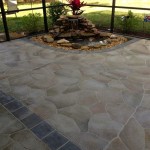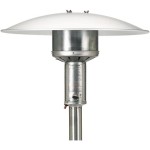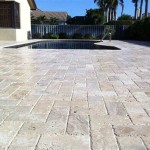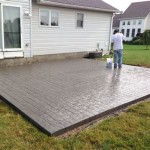Creating The Perfect Patio With Pavers
A patio serves as an extension of the home, offering an outdoor space for relaxation, entertainment, and enjoyment of nature. The selection of appropriate materials is crucial in transforming a basic outdoor area into a functional and aesthetically pleasing patio. Pavers, known for their durability, versatility, and aesthetic appeal, are a popular choice for patio construction. This article explores the various aspects involved in creating a perfect patio with pavers, encompassing design considerations, material selection, installation techniques, and maintenance procedures.
The design phase is paramount in creating a patio that seamlessly integrates with the existing landscape and fulfills the homeowner's specific needs. Careful consideration should be given to the patio's size, shape, and location, as well as the overall style and desired ambiance. A well-designed patio enhances the value and usability of the outdoor space, providing a welcoming environment for both residents and guests.
Prior to commencing any physical work, a comprehensive plan should be developed, outlining the patio's dimensions, layout, and drainage system. This plan serves as a blueprint for the entire project, ensuring accuracy and efficiency throughout the construction process. Neglecting the design phase can lead to costly mistakes and unsatisfactory results.
Key Considerations in Patio Design
Several factors should be taken into account during the patio design process to ensure a successful outcome. These include the patio's intended purpose, the surrounding landscape, and the homeowner's personal preferences. A thorough understanding of these elements is essential in creating a patio that meets both functional and aesthetic requirements.
The intended purpose of the patio will dictate its size and layout. A patio designed primarily for dining will require sufficient space for a table and chairs, while a patio intended for lounging may benefit from comfortable seating arrangements and ample room for movement. Similarly, a patio designed for entertaining may necessitate additional space for guests and outdoor cooking facilities.
The surrounding landscape should also be considered when designing a patio. The patio should complement the existing landscape, both in terms of style and materials. For example, a patio constructed in a natural setting may benefit from the use of natural stone pavers, while a patio in a more formal setting may be better suited to concrete pavers or brick. The color and texture of the pavers should also be selected to harmonize with the surrounding landscape.
Homeowner preferences play a significant role in the patio design process. The homeowner's personal style and desired ambiance should be reflected in the patio's design. This can be achieved through the selection of appropriate pavers, furniture, and accessories. The patio should be a space that the homeowner enjoys spending time in, and its design should reflect their individual tastes.
Drainage is a critical aspect of patio design. Proper drainage prevents water from pooling on the patio surface, which can lead to erosion, damage, and safety hazards. The patio should be graded to allow water to flow away from the house and toward a designated drainage area. Drainage systems, such as French drains or surface drains, may be necessary to ensure adequate drainage in areas with poor soil permeability or high rainfall.
The selection of pavers is a key decision in creating a visually appealing and durable patio. Pavers are available in a wide range of materials, shapes, sizes, colors, and textures, allowing for endless design possibilities. The choice of pavers will influence the overall look and feel of the patio, as well as its durability and maintenance requirements.
Concrete pavers are a popular choice due to their affordability, versatility, and durability. They are available in a wide range of colors and styles, and can be shaped to mimic natural stone or brick. Concrete pavers are also relatively easy to install and maintain.
Brick pavers offer a classic and timeless look that is well-suited to a variety of architectural styles. They are durable and long-lasting, and their warm, earthy tones can create a welcoming and inviting atmosphere. Brick pavers are more expensive than concrete pavers, but their aesthetic appeal and longevity make them a worthwhile investment.
Natural stone pavers, such as flagstone, slate, and travertine, offer a unique and natural look that is unmatched by manufactured pavers. They are durable and weather-resistant, and their natural variations in color and texture add character and charm to any patio. Natural stone pavers are the most expensive option, and their installation requires specialized skills and equipment.
Preparation Before Installation
Proper preparation is essential for a successful paver patio installation. This includes preparing the base, laying a geo-textile fabric, and installing edge restraints. A well-prepared base provides a stable and level foundation for the pavers, ensuring their long-term stability and preventing settling or shifting.
The first step in preparing the base is to excavate the area to the required depth. The depth of excavation will depend on the type of pavers being used and the intended use of the patio. A general guideline is to excavate to a depth of at least 6 inches for pedestrian traffic and 8 inches for vehicular traffic. The excavated area should be compacted using a plate compactor to ensure a firm and level surface.
A geo-textile fabric should be laid over the compacted soil to prevent weeds from growing up through the pavers and to separate the soil from the base material. The geo-textile fabric should extend beyond the edges of the patio to prevent soil erosion. Overlapping the fabric at the seams ensure the soil does not seep through.
A base of crushed stone should be laid over the geo-textile fabric. The crushed stone should be compacted in lifts, with each lift no more than 4 inches thick. Compacting the crushed stone ensures a stable and level base for the pavers. A layer of sand, also known as leveling course, is the final layer before the pavers are set. It is usually about one inch thick and allows for minor adjustments to grade.
Edge restraints are essential for preventing the pavers from shifting or spreading over time. Edge restraints can be made from a variety of materials, including plastic, metal, and concrete. They should be installed along the perimeter of the patio, ensuring that they are firmly anchored in the ground.
Paver installation requires careful attention to detail to ensure a professional and long-lasting result. The pavers should be laid in a pattern that is both aesthetically pleasing and structurally sound. Common paver patterns include running bond, herringbone, and basket weave.
The pavers should be laid tightly together, with minimal gaps between them. A rubber mallet can be used to gently tap the pavers into place. It is important to check the level of the pavers frequently to ensure that they are all at the same height.
Techniques During the Paver Installation
During the paver installation, attention to details matters like proper cutting, edge laying and joint filling are very important. Proper cutting allows for precise fitting of pavers. Edge laying assures the structural integrity of the paver structure. Joint filling prevents unnecessary movements between the pavers.
Cutting pavers may be necessary to fit them around corners or other obstacles. Pavers can be cut using a wet saw or a paver splitter. When cutting pavers, it is important to wear safety glasses and gloves to protect yourself from flying debris.
The edges of the patio should be carefully laid to ensure a clean and professional look. The edge pavers should be aligned with the edge restraints and firmly set in place.
After the pavers have been laid, the joints between them should be filled with polymeric sand. Polymeric sand is a special type of sand that hardens when it gets wet, creating a strong and durable joint. Polymeric sand helps to prevent weeds from growing in the joints and also helps to stabilize the pavers.
Maintaining a paver patio is essential for preserving its appearance and extending its lifespan. Regular cleaning, sealing, and joint maintenance will help to keep the patio looking its best for years to come.
The patio should be cleaned regularly to remove dirt, debris, and stains. A garden hose or pressure washer can be used to clean the patio surface. Stubborn stains can be removed with a mild detergent or a paver cleaner.
Sealing the pavers helps to protect them from weathering, staining, and fading. A paver sealer should be applied every few years, following the manufacturer's instructions. Sealing the pavers will also make them easier to clean.
The joints between the pavers should be inspected regularly for cracks or gaps. Any cracks or gaps should be filled with polymeric sand to prevent weeds from growing in the joints and to stabilize the pavers.
By following these guidelines, homeowners can create a perfect patio with pavers that will provide years of enjoyment and enhance the value of their property. Careful planning, proper installation, and regular maintenance are the keys to a successful paver patio project.

17 Paver Patio Ideas For The Best Backyard Retreat

How To Create The Perfect Paver Patio St Croix Valley

40 Patio Pavers Ideas Design For Paved Patios

10 Tips And Tricks For Paver Patios

How To Build A Paver Patio Young House Love

17 Paver Patio Ideas For The Best Backyard Retreat

40 Patio Pavers Ideas Design For Paved Patios

16 Garden Paving Ideas How To Create The Perfect Patio Space In Your Backyard Real Homes

Patio Perfect Diy Pavers Garden Design The Gardener

How To Build A Diy Backyard Patio With Pavers Keeping It Simple
Related Posts








